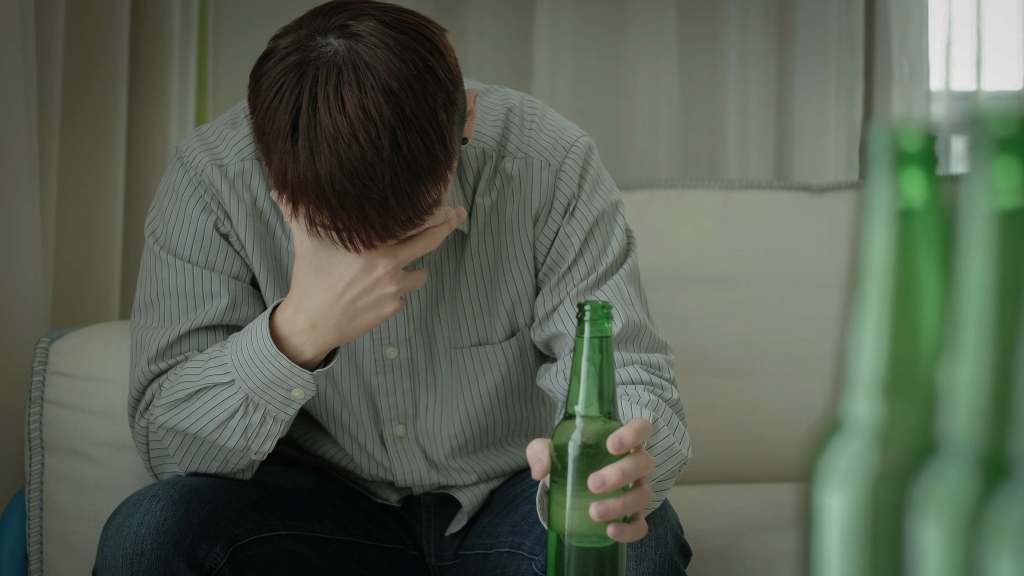The uncertainty of a person’s behavior tests family bonds, creates considerable shame, and give rise to great amounts of anxiety. Because families are interactive systems, everyone is affected, usually in ways they are not even aware of. When a person goes into treatment, it isn’t just a case of fixing the problem person. The change destabilizes the adaptation the family has made—and while the person in recovery is learning to do things differently, so must the rest of the family learn to do things differently. Otherwise, their behavior is at risk of cementing the problem in place.
Types of Treatment
While some signs of addiction are obvious, others are more difficult to recognize. Many people who realize they have a problem will try to hide it from family and friends, making it harder to tell whether someone is struggling. When their http://kuinje.ru/english3.php provider retires or moves, they may not find anyone willing to take over. The role of spirituality in addiction recovery is often misunderstood. IBut spiritual freedom can be part of healthy recovery if one understand it more clearly.
Narcotic Abuse
It is often a long and bumpy path, and relapse is nearly inevitable—but that doesn’t spell the end of recovery. There are coping strategies to be learned and skills to outwit cravings, and practicing them not only tames the impulse https://www.hais.ru/genetiki/tykerb-i-gerceptin-ih-rol-v-razjasnennom-lechenii.html to resume substance use but also gives people pride and a positive new identity that hastens recovery. Behavioral therapies help people in drug addiction treatment modify their attitudes and behaviors related to drug use.

Medicine as part of treatment
Growing up in families in which drinking or using drugs is common or normalized also places one at a greater risk for developing a substance use disorder. This article discusses what constitutes harmful substance use, illegal substance use, and prescription drug misuse. It also covers some of the substances that are more frequently misused as well as the risks of substance misuse. Substance abuse is typically defined as a pattern of harmful use of any substance for mood-altering purposes. Substances can include alcohol, prescription and over-the-counter drugs, illegal drugs, inhalants and solvents, nicotine, and even coffee.
Continued development of mobile health interventions will also help with disseminating treatment to a wider range of individuals struggling with alcohol use disorder. Mutual-support groups provide peer support for stopping or reducing drinking. Group meetings are available in most communities at low or no cost, and at convenient times and locations—including an increasing https://suzun.info/lifeassuranceguaranteedacceptance.html presence online. This means they can be especially helpful to individuals at risk for relapse to drinking. Combined with medications and behavioral treatment provided by health care professionals, mutual-support groups can offer a valuable added layer of support. Such a treatment may include pharmacological and/or psychosocial tools, as summarized in the next sections.
- Addiction can start harmlessly enough but easily snowball into something beyond the person’s control.
- Risk and protective factors may be either environmental or biological.
- The fact that the negative health effects of nicotine take a long time to manifest probably plays a role in the widespread abuse of tobacco.
- The approval of nalmefene in Europe was accompanied by some controversy (37); a prospective head-to-head trial of nalmefene and naltrexone could help clarify whether nalmefene has added benefits to the existing medications available for alcohol use disorder.
- But recent research has shown that even marijuana may have more harmful physical, mental, and psychomotor effects than first believed.
- Some believe that any use of illegal substances is dangerous and, therefore, abusive.
- There are strategies of distraction and action people can learn to keep them from interrupting recovery.
- These medicines can reduce your craving for opioids and may help you avoid relapse.
SAMHSA Offices and Centers provide national leadership to advance the agency’s mission and improve the behavioral health of the nation. HHS, through SAMHSA, announced notices of funding opportunities aimed at improving women’s behavioral health care across the United States. Consider how a social drinker can become intoxicated, get behind the wheel of a car, and quickly turn a pleasurable activity into a tragedy that affects many lives. Occasional drug use, such as misusing an opioid to get high, can have similarly disastrous effects, including impaired driving and overdose. For diagnosis of a substance use disorder, most mental health professionals use criteria in the Diagnostic and Statistical Manual of Mental Disorders (DSM-5), published by the American Psychiatric Association.
- Recovery from addiction is not a linear process, and increasingly, relapse is seen as an opportunity for learning.
- People with mental health disorders are more likely to develop an SUD than the general population.
- BetterHelp can connect you to an addiction and mental health counselor.
Let’s explore the current state of drug addiction treatment and recovery rates in the US through noteworthy statistics and trends. Some common names you’ll see are family and marriage therapy, motivational therapy, art therapy, or cognitive behavioral therapy (CBT). Counseling and therapy are usually focused on developing healthy skills to cope, like handling the loss of a loved one, drug or alcohol use, or a problem in your relationship. It can help you better understand the core cause of your thoughts and behaviors, so you can change unhealthy patterns. Substance use is a complex problem that is influenced by a number of factors. There is no way to predict who will become addicted to drugs, but a combination of influences can increase a person’s risk of developing an addiction.

Scott Disick Finds Out How Past Use of ‘Drugs and Alcohol’ Aged Him: ‘I Was Going Pretty Heavy’
For some people, committing to complete abstinence is not desirable or is too daunting a prospect before beginning treatment. In fact, there is growing support for what is called harm reduction, which values any moves toward reducing the destructive consequences of substance abuse. Researchers find that taking incremental steps to change behavior often motivates people to eventually choose abstinence. Nevertheless, many treatment programs, including Alcoholics Anonymous, require a commitment to complete abstinence as a condition of admission.